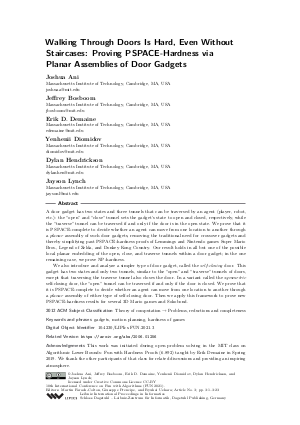LIPIcs.FUN.2021.3.pdf
- Filesize: 0.93 MB
- 23 pages

 Creative Commons Attribution 3.0 Unported license
Creative Commons Attribution 3.0 Unported license






Feedback for Dagstuhl Publishing